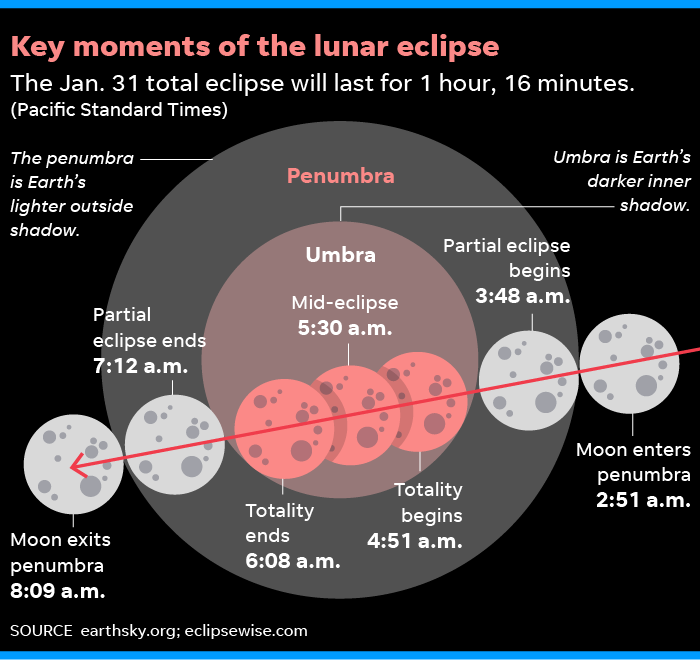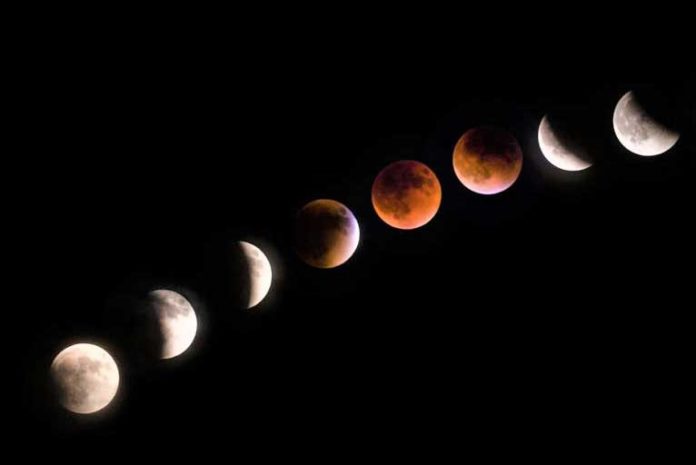According to NASA if you live in the western part of North America, Alaska, and the Hawaiian islands, you might set your alarm early the morning of Wednesday, Jan. 31 for a lunar trifecta: a pre-dawn “super blue blood moon.”
Beginning at 5:30 a.m. EST on Jan. 31, a live feed of the Moon will be offered on NASA TV and NASA.gov/live.
The Jan. 31 full moon is special for three reasons, it’s the third in a series of “supermoons,” when the Moon is closer to Earth in its orbit and about 14 percent brighter than usual.
It’s also the second full moon of the month, commonly known as a “blue moon.” The super blue moon will pass through Earth’s shadow to give viewers in the right location a total lunar eclipse. While the Moon is in the Earth’s shadow it will take on a reddish tint, known as a “blood moon.”

The Blue Moon, the second of two full moons in one calendar month, will pass through the Earth’s shadow on January 31, 2018, to give us a total lunar eclipse. Totality, when the moon will be entirely inside the Earth’s dark umbral shadow, will last a bit more than one-and-a-quarter hours. The January 31 full moon is also the third in a series of three straight full moon supermoons – that is, super-close full moons. It’s the first of two Blue Moons in 2018. So it’s not just a total lunar eclipse, or a Blue Moon, or a supermoon. It’s all three … a super Blue Moon total eclipse!
Is it the first Blue Moon total eclipse in 150 years, as some social media memes are now claiming? It is … if you’re not considering the whole world, but only the Americas. More about that below.
How about supermoon total lunar eclipses? The last supermoon total lunar eclipse was in September 2015. And the last super Blue Moon total eclipse happened on December 30, 1982.

If you live in North America or the Hawaiian Islands, this lunar eclipse will be visible in your sky before sunrise on January 31.
A partial lunar eclipse precedes the total eclipse by a little over one hour, and follows totality for a little over one hour. So, from start to finish, the moon takes 3 hours and 23 minutes to totally cross Earth’s dark umbral shadow. South America, most of Europe and Africa won’t be able see this eclipse. See worldwide map below.
Incidentally, a very light penumbral eclipse comes before and after the dark (umbral) stage of the lunar eclipse. But this sort of eclipse is so faint that many people won’t even notice it. The penumbral eclipse would be more fun to watch from the moon, where it would be seen as a partial eclipse of the sun.
Please Like, Share and Follow the …


















